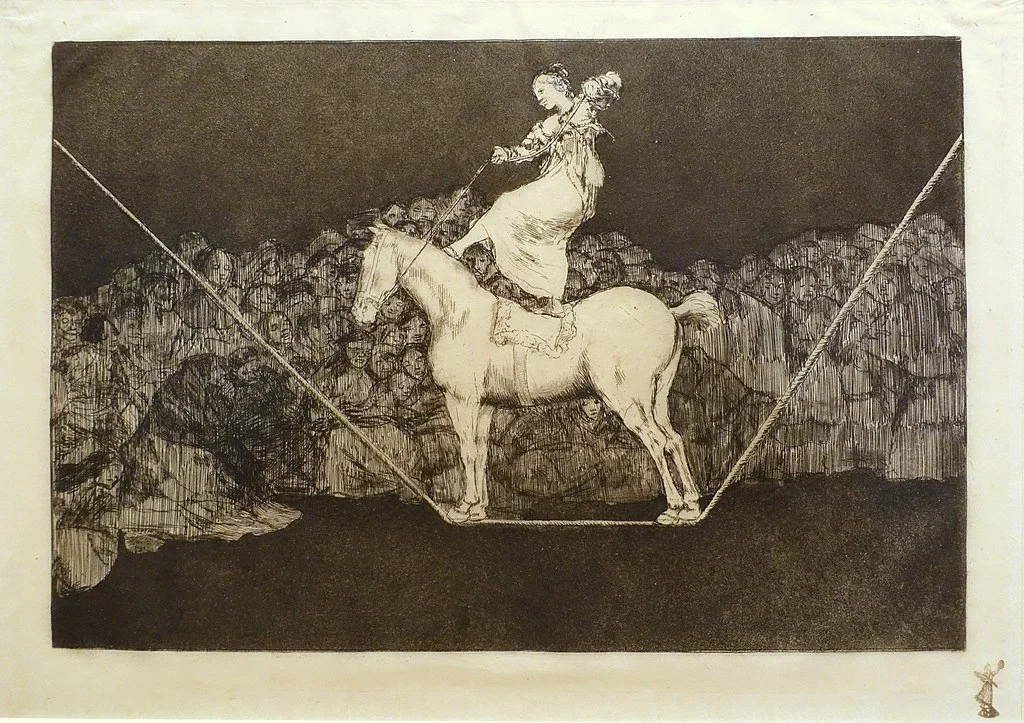Francisco de Goya (b. 1746, Fuentedetodos)
Disparate Puntual. A Queen of the Circus
ca. 1820, etching, aquatint on Japanese paper. Plate 24.45 x 35.56 cm.
Museum Bergruen, Berlin. Public domain.
William Kentridge describes how this image opened up for him the absurd world of Goya’s prints: “The horse, on a tightrope, becomes a kind of anti-horse: instead of being sturdy and mobile, it is balancing in its precarious position. The drama lies in the tightrope: a fat white line that comes down from the image’s upper left corner, travels horizontally between the horse’s hooves and up to the other side. It brings the precariousness of the subject matter and the graphic medium together so clearly…There are so many things that we could learn from this work....”

